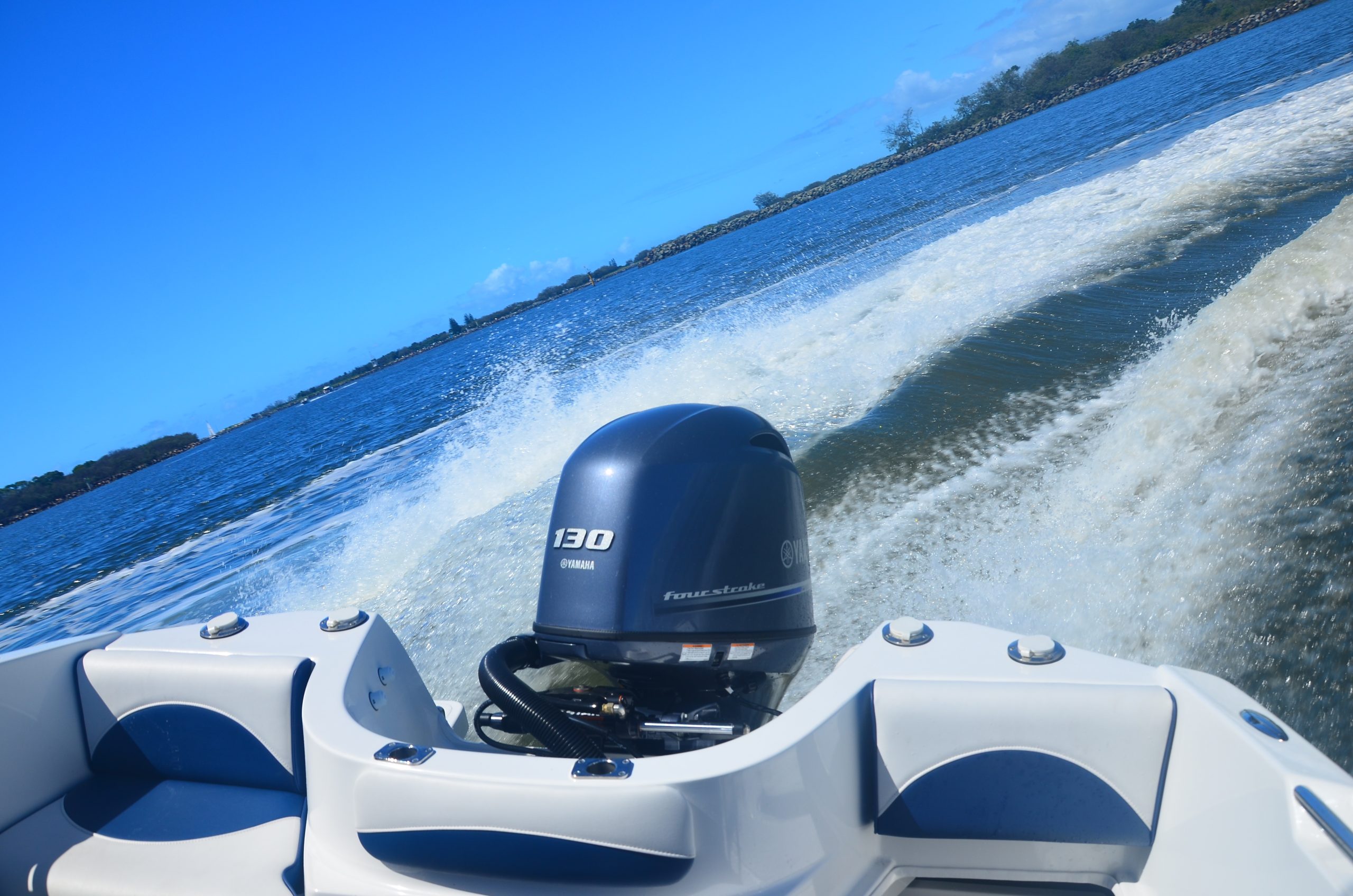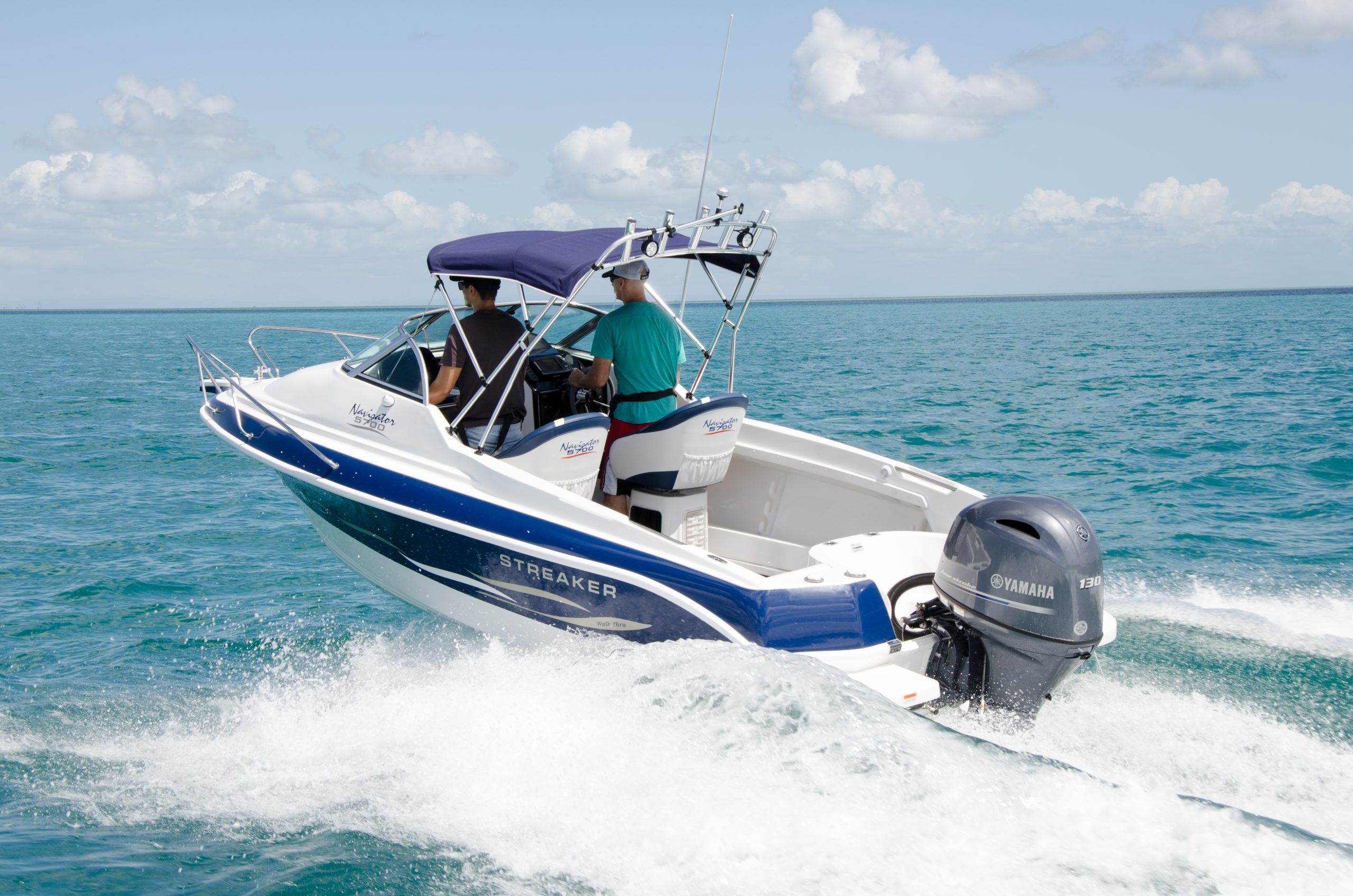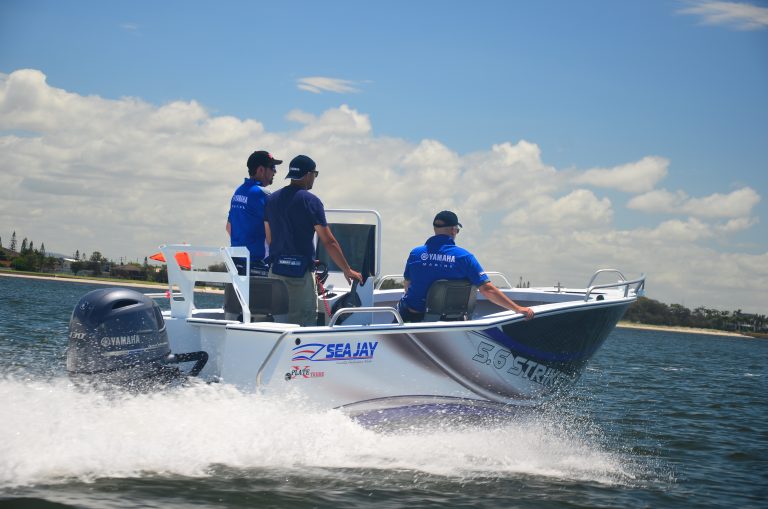Yamaha F130A

It’s an outboard that many in the Queensland boating industry have been calling for, especially those with heavy 5-6m plate alloy and glass boats (there were 34,643 5-6m registered boats in Qld in 2013). Yes, finally Yamaha has launched their 130hp four-stroke, the F130A. Fitting sweetly between the 115 and 150, this powerful motor is more than just a tweaked 115; it’s an original.
 Yes, the 130 features the 115B’s proven 1.8ltr, 16 valve, double overhead Camshaft (DOHC) engine, but the design features larger intake and exhaust valves for added power and better midrange torque (something that was very noticeable when testing). It also inherits technology from Yamaha’s larger motors like the single electronic throttle intake valve that interprets the user’s helm operations to make precise throttle movements according to engine temperature and atmospheric conditions. Cut a long story short, there’s less lag and more oomph when you punch the hammer down. Along with new fuel injection and ignition technology (no more HT Leads), this system delivers an incredibly responsive and powerful engine with exceptional fuel efficiency.
Yes, the 130 features the 115B’s proven 1.8ltr, 16 valve, double overhead Camshaft (DOHC) engine, but the design features larger intake and exhaust valves for added power and better midrange torque (something that was very noticeable when testing). It also inherits technology from Yamaha’s larger motors like the single electronic throttle intake valve that interprets the user’s helm operations to make precise throttle movements according to engine temperature and atmospheric conditions. Cut a long story short, there’s less lag and more oomph when you punch the hammer down. Along with new fuel injection and ignition technology (no more HT Leads), this system delivers an incredibly responsive and powerful engine with exceptional fuel efficiency.
It also offers some pretty impressive power to weight figures. Weighing in at 175.5kg (172kg dry weight), the 130A is the lightest four-stroke engine in the 130-150 horsepower class and is even lighter than competing direct-injected two-strokes.
The other big selling point is the amps this thing’s alternator pushes out. How does 35 amps at WOT and 27 at 1000 rpm grab you? That’s enough to charge and run a host of electronics and accessories.
One last feature that is worth noting is the new outer cowling design with an intake air drain system. This allows any water that enters the cowling during operation to easily drain away while intake air is routed through a labyrinth of passages that help trap and drain water before it enters the engine.
Other developments
Coinciding with the launch on the new 130A, Yamaha had a couple of other tricks up their blue sleeves. The first was the new Talon Propellers with SDS (Shift Dampener System) available in 14-24” pitch. The SDS means smooth, quiet gear changes and no prop chatter. These new props are available in both aluminium and stainless and are quickly getting a reputation for their ability to grip even at high trim angles. This means that they can also be run at a higher transom height. So far in all tests they have outperformed the old black 688 props and thanks to no extra hardware being required for fitting, they will naturally supersede the old models.
The other is the new Yamaha 6YC Command Link Digital colour LCD display (suits F30-F350). Set to supersede traditional round or square engine gauges, this new display relays engine RPM, fuel levels, fuel burn, fuel economy, engine water pressure, surface water temperature and more in one customisable and sleek dash display.
Tests
I was fortunate enough to test the F130A on the back of a Streaker Navigator 5700 (1185kg as tested) and not only did this thing corner like it was on rails with the 130 on the back, the 13⅛ x 16” Talon prop refused to let go no matter how tight and fast the donuts were. The midrange torque was also a big talking point with the throttle response from even the most minute of commands being noticeable. Despite weighing as much as a DI two-stroke, the hole-shot still felt like a four-stroke, but the Streaker did hit 40km/h (22 knots) in 7.5 seconds, so that’s nothing to sneeze at.
Once on the plane, this boat posted some impressive figures. Maximum speed was a whisker off 70km/h (around 38 knots) at 6300rpm and the most economical speed was at 4500 doing around 45km/h (24.5 knots) and burning just 21.10 L/h or 2.17 km/L. With the Streaker’s 146L of go-go juice this gives you an approximate range of around 300km.

Also tested was a Sea Jay Striker 5.6. This is a hull you see a lot in the north and even though I didn’t get a chance to test it, I made sure I tracked down the figures. Its test weight was almost exactly the same as the glass Streaker, so the results are interesting (same prop too). Top speed was about half a kilometre slower, but most economical cruising speed was at 3500rpm doing 34.25km/h at 12.75L/h and 2.69km/L. The crew did report that 0-40km only took 5.35 seconds though, so that’s interesting. Range with the Striker’s 200L tank was around 510km.
If you have a boat in that 5-6m category, I would recommend checking out the F130A. They, and the Talon Propellers and 6YC gauges, will be available from late April.
Postscript: for videos from the test day, head to Fish and Boat Tube. Cheers, The Ed’





